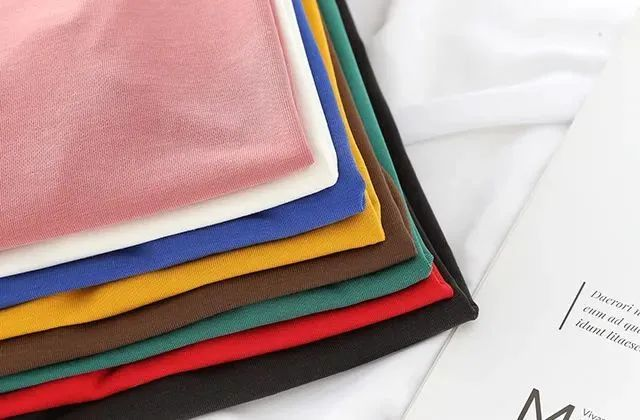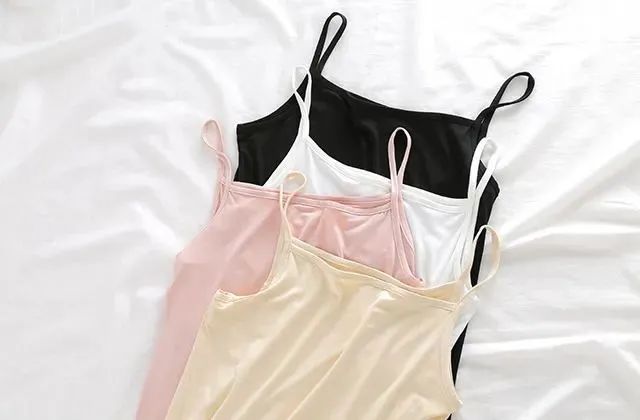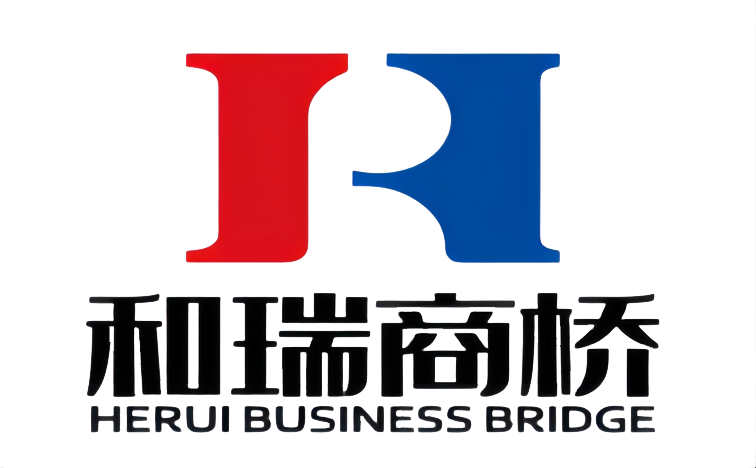Cotton is a kind of woven fabric with cotton yarn as raw material. Different varieties are derived due to different tissue specifications and different post-processing methods. Cotton cloth has the characteristics of soft and comfortable wearing, warmth preservation, moisture absorption, strong air permeability and easy dyeing and finishing. Because of its natural characteristics, it has long been loved by people and has become an indispensable basic article in life.
Introduction of Cotton fabric

Cotton is a kind of cloth made of cotton yarn. It is the general name of all kinds of cotton textiles. Cotton cloth is easy to keep warm, soft and close to the body, with good moisture absorption and air permeability. It is a necessity in people's daily life. Cotton fiber can be made into fabrics of various specifications, from light and transparent Bari yarn to thick canvas and thick velveteen. It is widely used in people's clothing, bedding, indoor products, interior decoration and so on. In addition, it is also widely used in packaging, industry, medical treatment, military and other aspects.
Types Of Pure Cotton Fabrics
Plain fabric
A fabric made of plain weave with the same or similar linear density of warp and weft yarn and warp and weft yarn. It is divided into coarse plain cloth, medium plain cloth and fine plain cloth.
The coarse plain fabric is rough and thick, with more neps and impurities on the cloth surface, which is firm and durable.
The medium flat fabric has compact structure, flat and plump cloth surface, firm texture and hard hand feel.
The fine plain fabric is fine, clean and soft, with light, thin and compact texture and less impurities on the cloth surface.
Uses: underwear, trousers, blouses, summer coats, bedding, printed handkerchief, medical rubber sole cloth, electrical insulation cloth, etc.

Twill
Twill is a cotton fabric with two upper and lower twills and 45 ° left inclination.
Features: the twill lines on the front are obvious, while the reverse side of variegated twill cloth is not very obvious. The number of warp and weft yarns is close, the warp density is slightly higher than the weft density, and the hand feel is softer than khaki and plain cloth.
Usage: jacket of uniform, sportswear, sports shoes, emery cloth, backing material, etc.
Denim fabric
Denim is made of pure cotton indigo dyed warp yarn and natural color weft yarn, which are interwoven with three upper and lower right twill weave. It is a kind of thick yarn dyed warp twill cotton.

Advantages: good elasticity, thick texture, indigo can match with clothes of various colors.
Disadvantages: poor air permeability, easy fading and too tight.
Uses: Men's and women's jeans, denim tops, denim vests, denim skirts, etc.
Buying skills: the lines are clear, there are not too many black spots and other miscellaneous hairs, and there is no pungent smell.
Cleaning and maintenance: it can be machine washed. Xiaobian suggested that two spoonfuls of vinegar and salt should be added when washing and soaking to fix the color. When washing, wash the reverse side, tidy and level, and dry the reverse side.
Flannelette
Flannelette is a cotton fabric in which the fiber of the yarn body is pulled out of the yarn body by the wool drawing machine and evenly covered on the surface of the fabric, so that the fabric presents rich fluff.
Advantages: good warmth retention, not easy to deform, easy to clean and comfortable.
Disadvantages: easy to lose hair and generate static electricity.
Purpose: winter underwear, pajamas and shirts.
Purchase skills: see whether the fabric is delicate, whether the velvet is uniform, and whether the hand feels smooth.
Cleaning and maintenance: pat the dust on the surface of the flannelette with a dry cloth, or wipe it with a wrung wet cloth.
Canvas
Canvas cloth is actually made of cotton or cotton polyester with special technology.
Advantages: durable, versatile and diverse.
Disadvantages: not waterproof, not resistant to dirt, easy to deform, yellowing and fade after washing.
Uses: luggage fabrics, shoes, travel bags, backpacks, sails, tents, etc.
Buying skills: feel soft and comfortable with your hands, look at the density of the canvas, and there will be no needle eyes in the sun.
Cleaning and maintenance: wash gently and evenly, and then dry naturally in a ventilated and cool place without exposure to the sun.
Corduroy
Corduroy is generally made of cotton, but also blended or interwoven with other fibers.
Advantages: thick texture, good warmth retention and air permeability, smooth and soft feel.

Disadvantages: it is easy to tear, has poor elasticity and is more likely to be stained with dust.
Uses: autumn and winter coats, shoes and hats fabrics, furniture decorative cloth, curtains, sofa fabrics, handicrafts, toys, etc.
Purchase skills: see whether the color is pure and bright, and whether the velvet is round and full. Choose pure cotton for clothes and polyester cotton for others.
Cleaning and maintenance: gently brush along the direction of fluff with a soft brush. It is not suitable for ironing and heavy pressure.
Flannel
Flannel is a soft and suede cotton wool fabric made of combed cotton wool yarn.
Advantages: simple and generous color, fine and dense plush, good warmth retention.
Disadvantages: expensive, inconvenient to clean, not too breathable.
Usage: blanket, four piece bed set, pajamas, skirts, etc.
Shopping tips: Jacquard is more wear-resistant than printing. Flannel with good texture should have a smooth and soft feeling without irritating smell.
Cleaning and maintenance: use neutral detergent, gently rub the stains with your hands, and do not use bleach.
Khaki
Khaki is a kind of fabric mainly made of cotton, wool and chemical fibers.
Advantages: compact structure, relatively thick, many kinds, easy to match.
Disadvantages: the fabric is not wear resistant.
Usage: used as spring, autumn and winter coats, work clothes, military uniforms, windbreaker, raincoat and other fabrics.
Grey
Grey cloth refers to the cloth made of relevant fibers through spinning and weaving without dyeing and finishing.
Purchasing skills according to different raw materials, grey cloth is divided into various types. When purchasing, choose the type of grey cloth according to your own needs.
Storage method: there should be a spacious and large warehouse for storing cloth, which can not be stacked together in the same direction. It should be bound into bundles according to a certain number, arranged in order, staggered horizontally and stacked layer by layer.
Chambray
Youth cloth is woven with dyed yarn and bleached yarn in warp and weft. It is called youth cloth because it is suitable for young people's clothing.
Advantages: the fabric has harmonious color, light and thin texture, smooth and soft.
Disadvantages: it is not wear-resistant and sun resistant, and there will be shrinkage.
Uses: shirts, casual clothes, dresses, overalls, ties, bow ties, square scarves, etc.
Cambric
Hemp yarn cloth is a kind of cotton fabric. Its raw material is pure cotton yarn or cotton hemp blended yarn. This kind of fabric is as light and cool as hemp, so it is named hemp yarn.
The utility model has the advantages of ventilation and good toughness.
Shortcomings can not be dried, easy to hook wire, easy to shrink.
Purpose: Men's and women's shirts, children's clothes and trousers, skirt materials, handkerchiefs and decorative cloth.
Cleaning and maintenance when washing, we should try to reduce the soaking time of the fabric.
Poplin
Poplin is a fine plain weave fabric made of cotton, polyester, wool and cotton polyester blended yarn. It is a fine, smooth and glossy plain weave cotton fabric.
Advantages: the cloth surface is clean and flat, the texture is fine, the grain grain is full, the luster is bright and soft, and the hand feel is soft, smooth and waxy.
Disadvantages: longitudinal cracks are easy to appear and the price is high.
Used for shirts, summer clothes and daily clothes.
Don't wash vigorously during cleaning and maintenance. Usually iron after washing. The ironing temperature should not exceed 120 degrees and don't expose to the sun.
Henggong
Henggong is a pure cotton fabric made of weft satin weave. Because the surface of the fabric is mainly covered with weft floating length, which has the style of satin in silk, it is also called horizontal satin.
Advantages: the surface is smooth and fine, soft and shiny.
Disadvantages: long floating length on the surface, poor wear resistance and easy fuzzing on the cloth surface.
It is mainly used as interior fabric and children's decorative cloth.
The cleaning and maintenance shall not be soaked for too long, and shall not be rubbed vigorously. Do not screw it dry by hand.
Cotton Chiffon
Warp Satin cotton fabric. It has the appearance of wool fabric and has obvious twill effect on the surface.
Features: the weft yarn is slightly thicker or similar to the warp yarn. It can be divided into yarn straight tribute, half line straight tribute, etc. After dyeing and finishing, the surface of the fabric is even, shiny and soft.
It can be used as uniform, coat fabric, etc.
Crepe
Crepe is a thin plain cotton fabric with uniform longitudinal wrinkles on the surface, also known as crepe.
The advantages are light, soft, smooth and novel, and good elasticity.
Defects will appear hidden wrinkles or wrinkles.
It can be used for all kinds of shirts, skirts, pajamas, bathrobes, curtains, tablecloths and other decorations.
Seersucker
Seersucker is a kind of cotton fabric with special appearance and style characteristics. It is made of light and thin plain fine cloth, and the cloth surface presents small uneven bubbles with uniform dense cloth.
The utility model has the advantages of good skin affinity and air permeability, and simple care.
Disadvantages: after long-term use, the bubbles and wrinkles of the cloth will be gradually worn out.
It is mainly used as the fabric of summer clothes and skirts for women and children, as well as decorative articles such as bedspreads and curtains.
The cleaning and maintenance editor reminds that the seersucker can only be washed in cold water. Warm water will damage the wrinkles of the cloth, so it is not suitable to scrub and twist.
Striped Fabric
Plaid is the main road variety in yarn dyed fabrics. Warp and weft yarns are arranged at intervals with two or more colors. The pattern is mostly strip or lattice, so it is called plaid.
Features: the cloth surface is flat, the texture is light and thin, the stripe is clear, the color matching is coordinated, and the design and color are bright. Most of the tissues are plain weave, but also twill, small pattern, honeycomb and leno.
It is mainly used for summer clothes, underwear, lining cloth, etc.
Cotton Suiting
It is woven with dyed yarn or thread. It has thick texture and looks like wool.
Cotton blended and interwoven fabric
Viscose fiber and fiber rich and cotton blended textiles
Blended with 33% cotton fiber and 67% viscose fiber or rich fiber.
Advantages and disadvantages wear resistance, higher strength than viscose fabrics, better moisture absorption than pure cotton, soft and smooth feel.
Polyester Cotton Fabric
35% cotton fiber and 65% polyester blend.
Advantages and disadvantages: flat, fine and clean, smooth feel, thin, light and crisp, not easy to pilling. However, it is easy to absorb oil, dust and generate static electricity.
Acrylic Cotton Fabric
The cotton content is 50% cotton fiber and 50% polypropylene fiber blended.
Advantages and disadvantages: neat appearance, small shrinkage, durable, easy to wash and dry, but poor moisture absorption, heat resistance and light resistance.
Uygur cotton fabric
Advantages and disadvantages: the moisture absorption and permeability are very good, but the dyeing is not bright enough and the elasticity is poor.
How to distinguish the count and density of cotton cloth
A unit of measure for the thickness of a fiber or yarn. It is expressed as the length of fiber or yarn per unit weight. The lower the count, the thicker the fiber or yarn. 40s means 40.
Density refers to the number of warp and weft yarns arranged per square inch, which is called warp and weft density. It is generally expressed by "warp number * weft number". 110 * 90 indicates 11 warp yarns and 90 weft yarns.
Width refers to the effective width of the fabric, which is usually expressed in inches or centimeters. The common ones are 36 inches, 44 inches, 56-60 inches and so on. Width is usually marked after density.
Gram weight is the weight of fabric per square meter, and the unit is "gram / square meter (g / ㎡)". According to Xiaobian, the higher the gram weight of the fabric, the better the quality and the more expensive the price. The gram weight of denim fabric is generally expressed by "Oz".
Post time: Jun-03-2019

